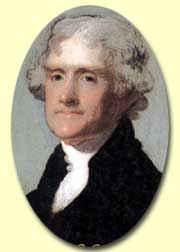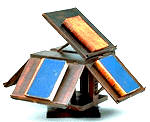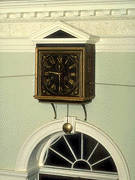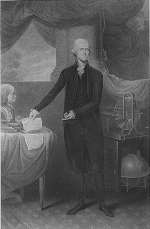Thomas Jefferson on Albemarle County, VA

INVENTIONS OF
THOMAS JEFFERSON
As mentioned, Jefferson has been recognized throughout history as an esteemed politician and statesman, an established architect, as well as an influential educator; however, we will now look at Jefferson from a different point of view through an analysis of his life as an inventor. When discussing the role of science in his life, Jefferson often commented, "Nature intended me for the tranquil pursuits of science, by rendering them my supreme delight."

When in Europe as Secretary of State, Thomas Jefferson observed that the Dutch moldboard, which is the front of a plow that lifts up and turns over sod, was awkward and ineffective. Setting his mind to the problem, Jefferson interwove art and purpose to invent a new moldboard based on pure mathematical principles, namely, the right angle. This original moldboard briefly transformed agriculture (before iron came to replace the wooden plows), and yet Jefferson never tried to patent it. Believing that invention should be solely for the good of the people and not for the advancement of the inventor, Jefferson encouraged public use of this easily duplicated invention.




